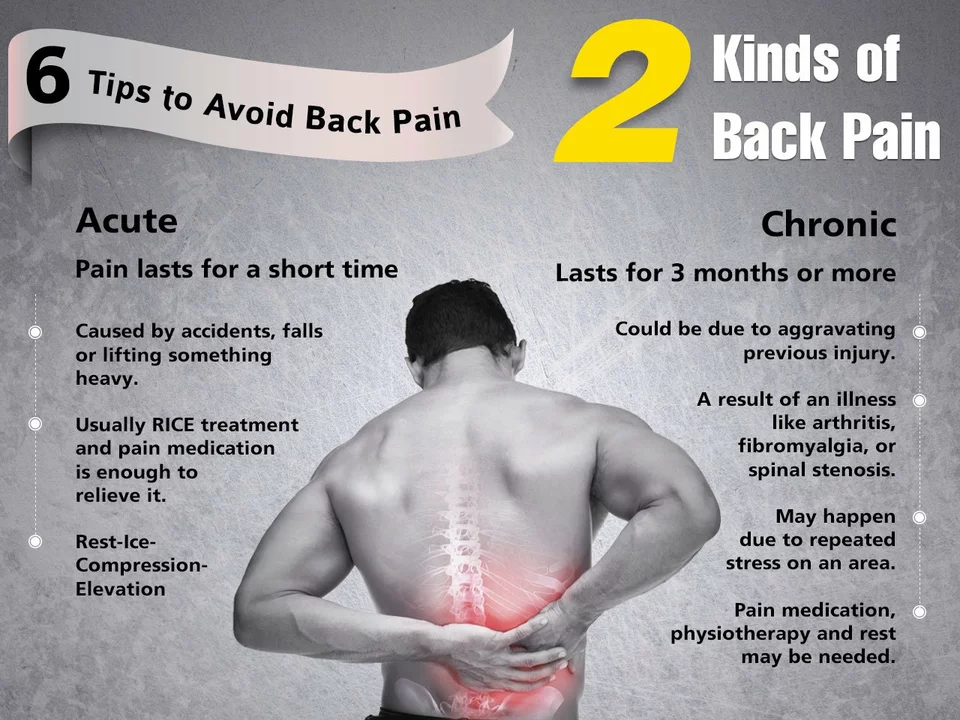
Understanding the Connection Between Nausea and Exercise
As someone who loves to stay active and keep fit, I've often experienced bouts of nausea during or after an intense workout session. I know I'm not alone in this, and many of you have probably felt that unsettling feeling in your stomach while exercising. In this article, we'll explore the reasons behind the connection between nausea and exercise, and I'll share some practical tips on how to prevent it from happening.
Why Does Exercise Sometimes Cause Nausea?
First, let's take a look at the possible reasons why exercise can sometimes lead to nausea. There are several factors that can contribute to this unpleasant sensation, and understanding them can help us find ways to prevent it from happening in the future.
Dehydration and Electrolyte Imbalance
One of the most common causes of exercise-induced nausea is dehydration. When we sweat during exercise, we lose water and essential electrolytes, such as sodium and potassium. If we don't replace these lost fluids and electrolytes, it can lead to an imbalance in our body, causing symptoms like dizziness, headache, and nausea. This is especially true during intense or prolonged exercise sessions when our body struggles to maintain its delicate balance of water and electrolytes.
Reduced Blood Flow to the Stomach
Another possible reason for nausea during exercise is reduced blood flow to the stomach. When we exercise, our body redirects blood flow from less essential organs, such as the digestive system, to our working muscles. This reduced blood flow to the stomach can slow down digestion and cause feelings of nausea, especially if we've eaten a large meal before exercising.
Gastroesophageal Reflux (GERD)
For some people, exercise can trigger symptoms of gastroesophageal reflux disease (GERD), a condition where stomach acid flows back into the esophagus, causing heartburn, chest pain, and nausea. High-impact exercises and bending or twisting movements can put pressure on the lower esophageal sphincter, allowing stomach acid to escape and cause discomfort.
How to Prevent Nausea During Exercise
Now that we understand the possible causes of exercise-induced nausea, let's explore some practical tips on how to prevent it from happening. By implementing these strategies, you can enjoy your workouts without the fear of feeling sick midway through.
Stay Hydrated
As mentioned earlier, dehydration is a common cause of nausea during exercise. To prevent this, make sure to drink enough water before, during, and after your workouts. If you're exercising for an extended period or in hot conditions, consider sipping on a sports drink that contains electrolytes to help maintain your body's balance. Listen to your body and adjust your fluid intake accordingly.
Avoid Heavy Meals Before Exercise
Since reduced blood flow to the stomach can cause nausea during exercise, it's essential to avoid eating large meals before your workouts. Instead, opt for a light snack, such as a banana or a piece of toast with peanut butter, about 30 minutes to an hour before you exercise. This will provide you with energy without overloading your digestive system.
Choose Low-Impact Exercises
If you're prone to GERD or find that high-impact exercises cause nausea, consider switching to low-impact activities that are gentler on your digestive system. Examples of low-impact exercises include swimming, cycling, walking, and yoga. These activities still provide an excellent workout without putting excessive pressure on your lower esophageal sphincter.
Adjust Your Exercise Intensity
Lastly, it's essential to listen to your body and adjust your exercise intensity as needed. If you notice that you often feel nauseous during high-intensity workouts, try scaling back the intensity a bit to see if that helps alleviate your symptoms. Remember, it's better to have a slightly less intense workout that you can enjoy without feeling sick, than to push yourself too hard and end up feeling miserable.
In Conclusion
Nausea during exercise can be an uncomfortable and frustrating experience, but by understanding its causes and implementing the strategies mentioned above, you can reduce the chances of it happening to you. Stay hydrated, avoid heavy meals before workouts, choose low-impact exercises if necessary, and listen to your body to find the right exercise intensity for you. By doing so, you'll be able to enjoy your workouts without the fear of feeling sick, and continue on your journey towards better health and fitness.



When you push your body hard, the autonomic nervous system can flip a switch that prioritizes muscle perfusion over digestion.
That shift reduces the blood flow to the stomach, which means food sits longer in the gut and can trigger a queasy feeling.
At the same time, the surge of adrenaline spikes the heart rate and can cause the stomach muscles to contract in a way that mimics nausea.
If you haven’t hydrated properly, the drop in plasma volume amplifies the problem, because electrolytes are needed to keep the smooth muscle of the gastrointestinal tract relaxed.
Even a modest electrolyte imbalance, such as low sodium or potassium, can make the brain interpret signals from the gut as distress.
Another hidden culprit is the timing of your meals: a heavy carbohydrate load too close to a HIIT session forces the digestive system to work while your legs are demanding oxygen.
Switching to a light snack that combines simple carbs and a bit of protein-think a banana with a dab of peanut butter-gives you quick fuel without overloading the stomach.
People who suffer from gastroesophageal reflux often notice that high‑impact moves, like burpees or kettlebell swings, increase intra‑abdominal pressure.
That pressure can force the lower esophageal sphincter to open briefly, allowing acid to splash back up into the esophagus.
If you’re prone to reflux, swapping those moves for low‑impact alternatives such as rowing, cycling, or a steady‑state jog can dramatically cut down the acid‑backward flow.
Breathing technique is another often‑overlooked factor; shallow, rapid breaths during intense intervals can exacerbate the sympathetic response and heighten nausea.
Practicing diaphragmatic breathing-inhale through the nose for a count of four, exhale through the mouth for a count of six-helps keep the vagus nerve calm.
Temperature also matters: exercising in a hot, humid environment accelerates sweat loss, which means you lose water and salts faster than you can replace them.
A simple rule of thumb is to drink about 150‑200 ml of water every 15‑20 minutes of moderate exercise, and add an electrolyte tablet if you’re sweating heavily.
Finally, listen to your body’s warning signs; if the queasy sensation starts to climb, scale back the intensity or take a brief walk to let blood flow normalize.
By blending proper hydration, smart snack timing, mindful breathing, and exercise selection, you can keep nausea at bay and let your workouts stay enjoyable.
i always make a lil snack before runnning cuz it stops the queasy feeling.
Staying hydrated is the first line of defense against that uneasy stomach feeling.
Try sipping a small amount of water every few minutes instead of guzzling a big glass at once.
Pair your drink with a pinch of salt or a sports drink if you’re sweating a lot.
Also, give yourself a 30‑minute window after a modest snack before you launch into a hard session.
These little tweaks can make a big difference without sacrificing performance.
Hydration matters drink water before workout stay consistent during intense sessions if you sweat a lot add electrolytes keep snack light and easy digestible avoid big meals close to training
Wow!!! Who knew a simple jog could turn into a nauseating nightmare???
Listen up, folks-if you’re chugging sugary sodas before a HIIT blast, you’re basically signing up for a stomach revolt!!!
Stop the madness, hydrate with real water, maybe a pinch of salt, and ditch the heavy breakfast right before the grind!!!
Your gut will thank you, and you’ll finally crush those PRs without the puke!??
It appears the previous comment contains several punctuation errors; a more precise formulation would improve clarity.
nah, i think the whole nausea thing is overrated 😂 you can just push through it, the body will adapt lol
I’ve found that swapping high‑impact jumps for steady‑state cycling really cuts down on that uneasy feeling.
It’s a subtle shift but the workouts stay effective and the gut stays calm.
From a bioenergetics standpoint, the acute hypovolemia induced by excessive perspiration precipitates a maladaptive autonomic response, culminating in gastro‑intestinal distress.
Implementing periodized electrolyte repletion protocols mitigates this cascade, preserving homeostatic equilibrium during high‑intensity interval training.
Hydrate, snack light, breathe deep – simple fixes that stop nausea dead in its tracks.
good point but maybe just tell people to drink a sports drink and eat a banana before the session
Drink water, have a small snack, and don’t overdo it. Your stomach will feel better and you can keep moving.
Let’s be real, nobody wants to feel like they’re vomiting on a treadmill – it’s downright disgusting and a sign you’re ignoring basic human physiology.
Stop drinking soda before workouts it’s just bad and makes you sick
Honestly this discussion borders on the trivial; the real issue is that most people lack basic knowledge about fluid balance and simply repeat the same tired advice without any nuance.
Yo, if you’re still getting sick after all that, maybe you’re just not listening to your body 🤷♂️ try a slower pace and see if the nausea fades.
Perhaps the nausea is a reminder that our bodies demand balance; when we respect that, fitness becomes a harmonious practice rather than a forced ordeal.